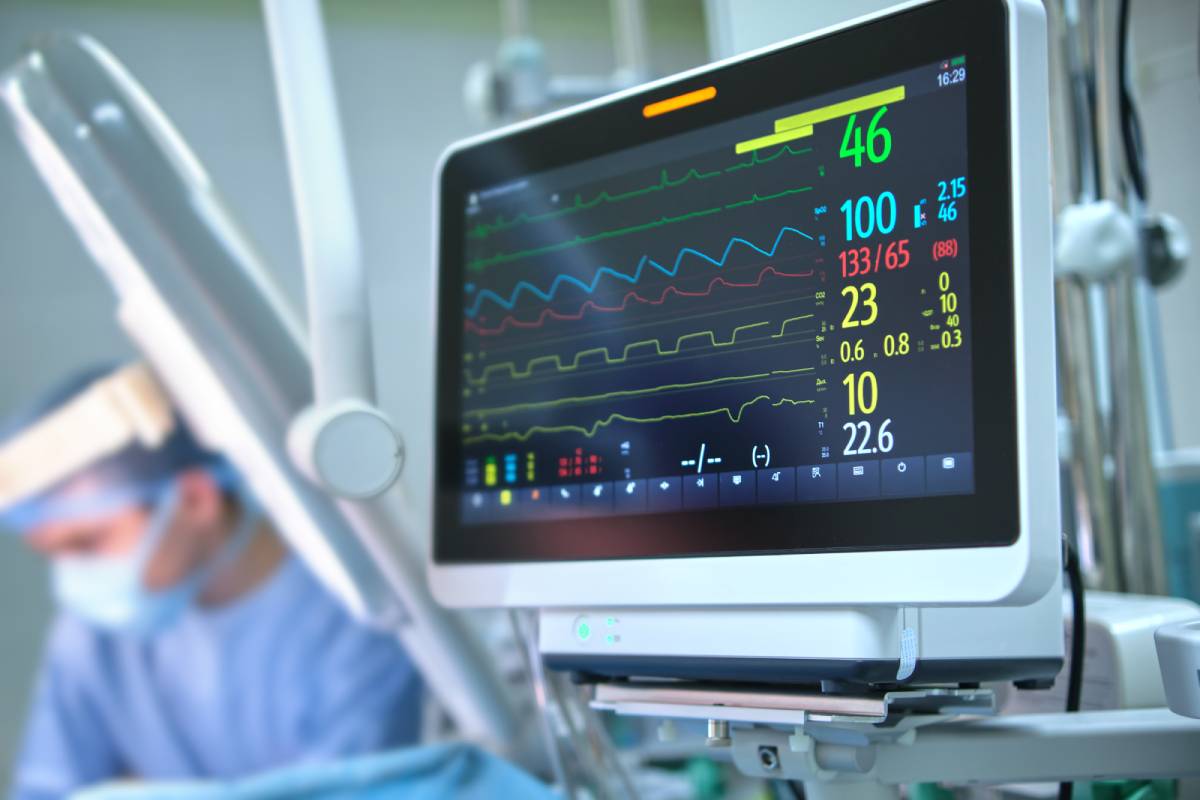
Patient monitoring during anesthesia is critical to ensuring their well-being. This includes monitoring a patient’s ventilation, circulation, body temperature, and oxygenation in both their inspired gas and in their blood. Blood oxygen monitoring during surgery is particularly important for maintaining adequate tissue and organ perfusion. This prevents the development of hypoxemia, hyperoxemia, and other such complications that can lead to negative outcomes 1,2. This is particularly problematic among patients who already have or are predisposed to respiratory problems, including but not limited to obstructive sleep apnea. To this end, blood oxygen monitoring methods such as pulse oximetry have been developed and successfully implemented during anesthesia.
In order to gauge a patient’s oxygenation level, healthcare providers can assess (1) the saturation level of oxygen in hemoglobin via pulse oximetry, (2) the hematocrit, an indicator of hemoglobin concentration, and (3) the partial pressure of oxygen in arterial blood.
Pulse oximetry noninvasively and continuously assesses the saturation of oxygen bound to hemoglobin. In particular, it measures the percentage of oxyhemoglobin and reduced hemoglobin present in arterial blood. Its downsides include the fact that it may be affected by many factors, including motion artifacts, ambient light, reduced peripheral blood flow (which can be caused by hypotension or vasoconstriction), electrical noise from surgical instruments, increased carboxyhemoglobin or methemoglobin concentrations in the blood, or darkly pigmented skin.
Meanwhile, a patient’s hematocrit can be measured by a blood sample analysis usually prior to surgery, or, in some cases, from blood samples collected during surgery. In cardiac surgery in particular, it is critical to ensure that a patient’s hematocrit remains within a specified range 3.
Finally, arterial blood gas measures probe the partial pressure of oxygen in arterial blood samples; this partial pressure of oxygen in arterial blood is directly linked to oxygen saturation levels in blood hemoglobin according to a linear relationship in most clinical contexts.
Today, the standard protocol laid forth by the American Society of Anesthesiologists is to use a quantitative method of assessing oxygenation such as pulse oximetry 4. Adequate illumination and exposure of the patient are necessary to assess color, and an audible pulse tone and low threshold alarm should be used.
A somewhat recent study sought to assess broadly conducted research on the effectiveness of pulse oximetry to identify hypoxemia and related events among a large general surgery population 5. The research team found no evidence that use of pulse oximetry affected the outcome of anesthesia. Specifically, routine continuous pulse oximetry monitoring neither reduced the rate of transfer to the intensive care unit nor decreased mortality. As such, the researchers concluded that the value of perioperative monitoring via pulse oximetry remains questionable as regards improved outcomes, effectiveness and efficiency.
Intraoperative oxygen monitoring is critical to patient well-being, but further studies are required to improve our understanding of the clinical impact of intraoperative hypoxemia and the strategies that are most efficient in minimizing its occurrence.
References
- Ehrenfeld, J. M. et al. The incidence of hypoxemia during surgery: Evidence from two institutions. Can. J. Anesth. (2010). doi:10.1007/s12630-010-9366-5
- Karalapillai, D. et al. Frequency of hyperoxaemia during and after major surgery. Anaesth. Intensive Care (2020). doi:10.1177/0310057X20905320
- Kolotiniuk, N. V., Manecke, G. R., Pinsky, M. R. & Banks, D. Measures of Blood Hemoglobin and Hematocrit During Cardiac Surgery: Comparison of Three Point-of-Care Devices. J. Cardiothorac. Vasc. Anesth. (2018). doi:10.1053/j.jvca.2017.11.022
- American Society of Anestesiologist. Standards for Basic Anesthetic Monitoring. J. Chem. Inf. Model. (2020).
- Pedersen, T. et al. Pulse oximetry for perioperative monitoring. Cochrane Database of Systematic Reviews (2014). doi:10.1002/14651858.CD002013.pub3

